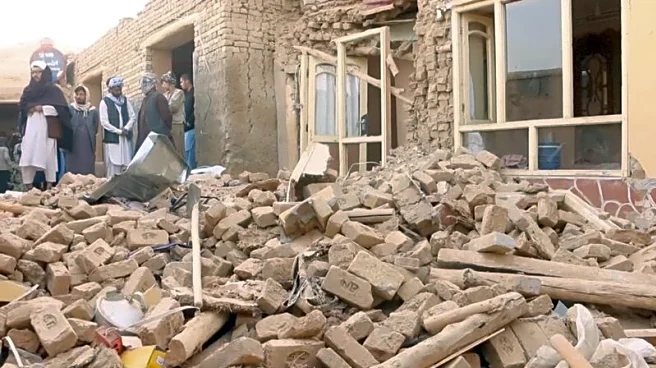What's Happening?
The U.S. Supreme Court is deliberating on whether a military contractor, Fluor Corporation, can be held liable for actions taken during military operations. This case arises from a 2016 incident at Bagram
Airfield in Afghanistan, where a suicide bomber, allegedly employed by a subcontractor of Fluor, attacked a Veterans Day event, resulting in multiple casualties and injuries. Former U.S. Army Specialist Winston T. Hencely, who was critically injured, has sued Fluor, arguing negligence and failure to meet contractual obligations. The case raises questions about the extent of immunity granted to contractors under the Federal Tort Claims Act (FTCA), which traditionally protects the federal government from lawsuits related to combat activities.
Why It's Important?
The outcome of this case could have significant implications for the legal responsibilities of military contractors and the scope of federal immunity in combat zones. If the court rules against Fluor, it may open the door for more lawsuits against contractors, potentially affecting their operations and the federal government's ability to engage private entities in military activities. This decision could also influence how contractors are held accountable for their actions in war zones, impacting their legal and financial liabilities. The case highlights the ongoing debate over the balance between federal interests and individual rights to seek redress for grievances.
What's Next?
The Supreme Court's decision, expected early next year, will determine whether the lawsuit against Fluor can proceed. This ruling will also affect related lawsuits filed by family members of those killed and injured in the attack, which are currently on hold. The decision could prompt legislative action to clarify the legal status of contractors in military operations, potentially leading to changes in federal law governing contractor liability.
Beyond the Headlines
This case underscores the complex legal and ethical issues surrounding the use of private contractors in military operations. It raises questions about the accountability of contractors and the transparency of their operations in conflict zones. The decision could lead to increased scrutiny of contractor practices and their compliance with military protocols, potentially influencing future contracts and operational guidelines.















